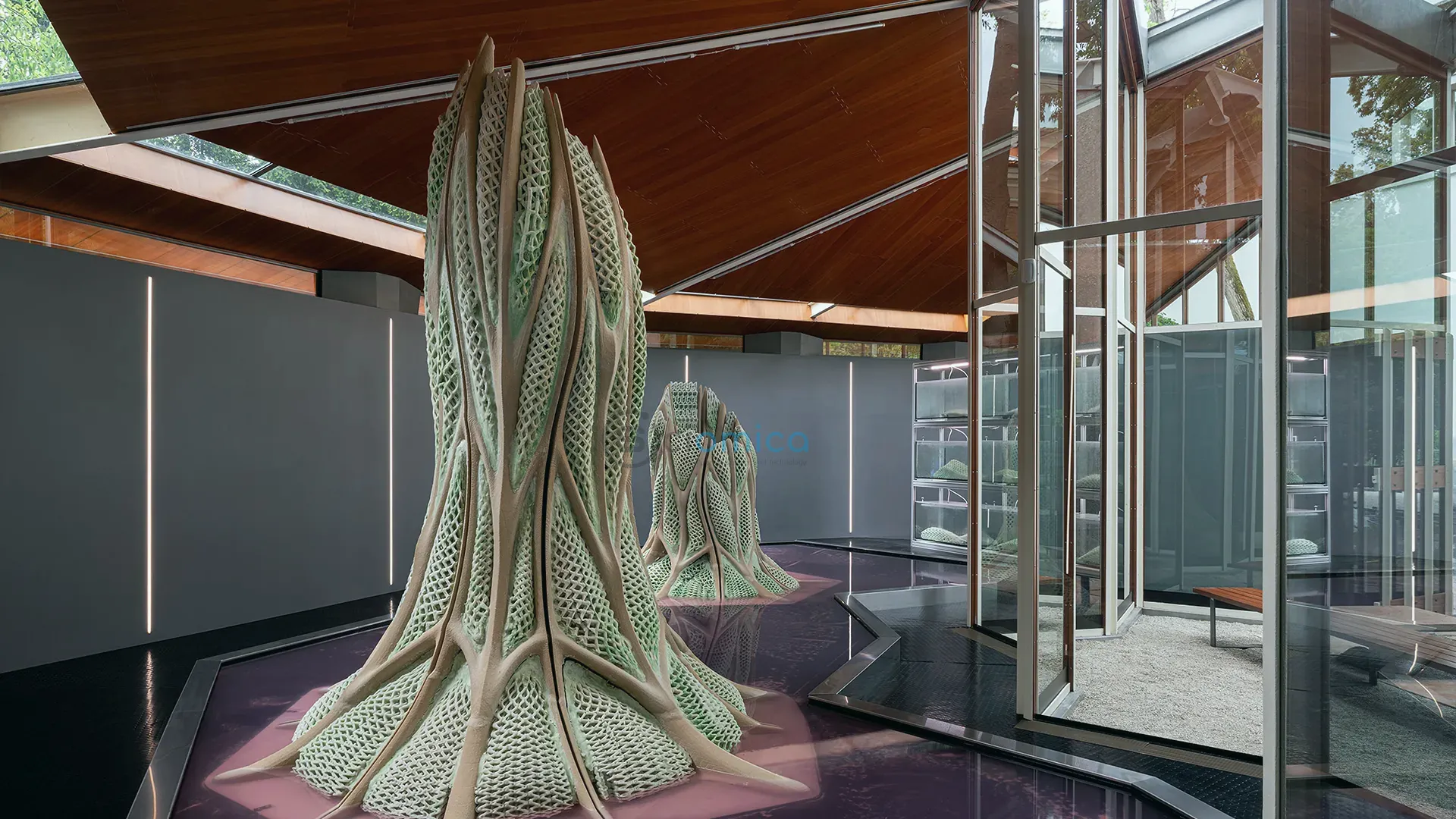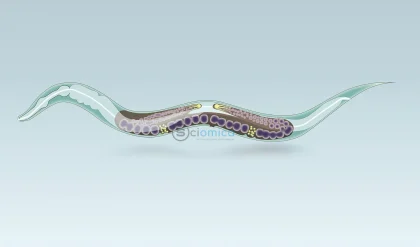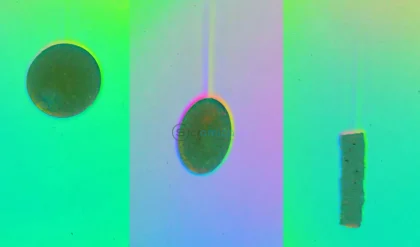
At ETH Zurich, a pioneering initiative is underway that merges traditional materials with living microorganisms, including bacteria, algae, and fungi. The interdisciplinary team, led by Professor Mark Tibbitt, aims to develop “living materials” that can utilize the metabolism of these microorganisms to attain beneficial properties, such as the ability to absorb carbon dioxide (CO2) from the atmosphere via photosynthesis. Tibbitt highlights that this innovative research could significantly impact how we approach carbon sequestration in future construction.
This vision has been brought to fruition by Tibbitt and his research team, who have successfully incorporated photosynthetic cyanobacteria into a printable gel. They have thus created a living material that not only grows but also actively captures CO2 from the air. Their groundbreaking study, recently published in Nature Communications, showcases the potential of this “photosynthetic living material.”
A key feature of this new material is its dual mechanism for carbon sequestration. The living substance, which can be shaped using 3D printing technology, requires simply sunlight and artificial seawater for its development, in addition to CO2. Tibbitt suggests that the material could play a vital role in the future of construction by allowing CO2 to be stored directly within building structures.
The efficiency of this living material lies in its ability to capture significantly more CO2 than it expels through organic growth. According to Tibbitt, the cyanobacteria contribute to carbon storage in two forms: as biomass and as minerals, which serves as an additional carbon sink. The author Yifan Cui emphasizes the ancient lineage and efficiency of cyanobacteria, which can photosynthesize using even minimal light to convert CO2 and water into biomass.
During photosynthesis, these microorganisms alter the surrounding chemical environment, leading to the precipitation of solid carbonates, which are a more stable form of CO2 storage compared to biomass. Such unique properties of cyanobacteria allow the living material to enhance its structural integrity over time as the minerals deposited within solidify the initially soft gel.
Laboratory tests indicate that the material can effectively sequester CO2 for over 400 days, achieving a rate of approximately 26 milligrams of CO2 absorption per gram of material—far exceeding various biological approaches and comparable to the applications of chemical mineralization found in recycled concrete.
The carrier medium for the cyanobacteria is a hydrogel made from polymers that allow for high water content and nutrient transport, facilitating optimal living conditions for the bacteria while ensuring even distribution throughout the material. Tibbitt’s team has optimized the hydrogel’s design through 3D printing to encourage effective nutrient flow and light penetration, ensuring sustained productivity of the cyanobacteria over extended periods.
The research team envisions incorporating this living material into building designs, such as façade coatings, that can continually absorb CO2 over a building’s lifespan. While implementation may take time, architects have already begun exploring this innovative concept.
Notably, the concept has recently gained prominence at the Architecture Biennale in Venice, where ETH doctoral student Andrea Shin Ling showcased the material on a larger scale. In collaboration with the Canada Pavilion, she developed a biofabrication platform to produce living structures utilizing cyanobacteria, which can theoretically capture substantial amounts of CO2 akin to a 20-year-old pine tree.
In Milan, the “Dafne’s Skin” installation explores living materials’ roles in future architectural designs, showcasing how living organisms can transform aesthetics while serving ecological functions. This innovative endeavor underscores the potential of living materials in sustainable construction.
Through the ALIVE initiative, ETH Zurich continues to foster collaborations across disciplines to uncover new applications for living materials, signaling a shift towards more environmentally friendly building practices.
Reference:
- Dalia Dranseike, Yifan Cui, Andrea S. Ling, Felix Donat, Stéphane Bernhard, Margherita Bernero, Akhil Areeckal, Marco Lazic, Xiao-Hua Qin, John S. Oakey, Benjamin Dillenburger, André R. Studart, Mark W. Tibbitt. Dual carbon sequestration with photosynthetic living materials. Nature Communications, 2025; 16 (1) DOI: 10.1038/s41467-025-58761-y






